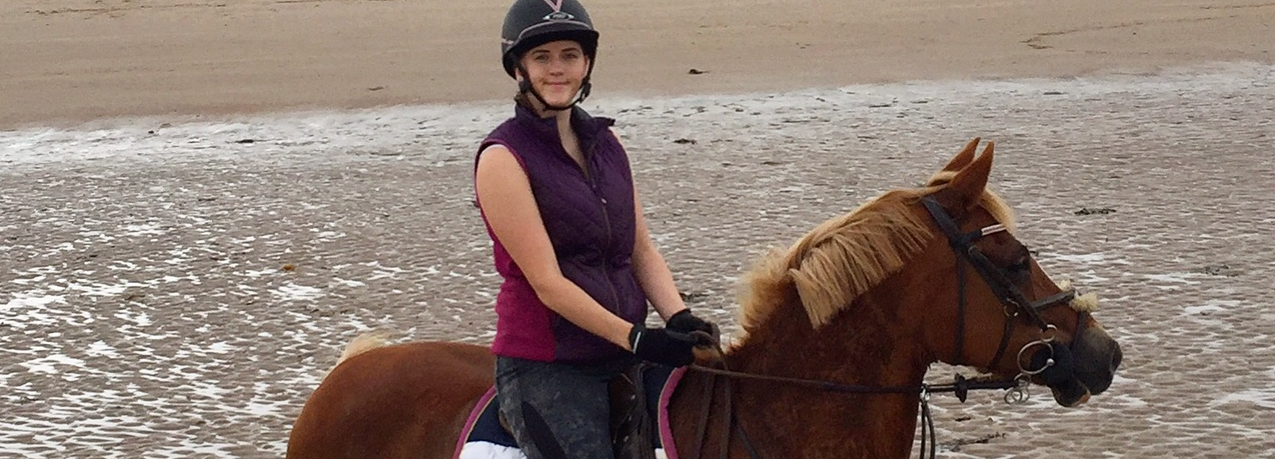
Riding a forward horse can be quite daunting especially if you're lacking in confidence and experience. As every horse is different you need to learn how to change your riding according to each horse. I remember riding a very forward horse called Vogue in the riding school and being intimidated as she was stronger than any horse I had ridden. Little did I know at the time but if I had not put my leg on then she would have been a lot easier to ride. Over winter it's more likely for horses not to be ridden as much.
Annie is usually only ridden two to three times a week rather than four to five over summer. Winter is cold and dark, not the ideal riding conditions, especially without an indoor school. Lunging can be a great help when you don't have time to tack up and ride but you do have a spare ten minutes. When lunging, don't make the mistake of just chasing the horse around to tire them out. This is not the point and you won't achieve a great deal. Use lunging to develop your horses ground work, getting them to listen to both visual and voice cues from you. Change where you lunge, the pace, the size of the circle and the direction regularly to keep your horse thinking and listening. Even add some poles in if you've got time. After a while you will be surprised how much you have both learned!
I usually just lunge Annie with a headcollar as she listens really well to voice and visual cues but if your horse is stronger or just a bit fizzy then a cavasson can give you the extra control you may need. If you have time add a persoa to help build you horses muscle definition.
So lunging out of the way and it's time to get on. Remember to relax! If you're tense it's likely you're going to be squeezing the horse with your legs which will send it forward. If you're used to the more slower horses who you may need to pony club kick to move an inch, then resist doing that. Start off at the lightest cue possible. (I've ridden horses where the slightest click and they're shot away). Use your voice, then a small squeeze, if still nothing then use a slightly firmer cue.
Try not to hang onto the horses mouth. Despite them pulling what often happens is the more you pull, the more they pull back. Sometimes just softening your hands allows you both to relax. If you're struggling to stop or slow down then circle the horse tighter and tighter until it physically has to slow down (or run into a wall as a last resort haha). Circling a horse has gotten me out of so many bad situations. If a horse tries to rear, buck or bolt pull one rein and circle the horse. Honestly this is the best advice I have ever received! It usually slows the horse, even if only for a brief time, but it gives you a few seconds to shorten your reins, get your stirrups back and make a plan.
Jumping a fizzy horse can be difficult as they often get even more excited. They're a lot more likely to throw in a few bucks and bolts. If the horse tries to bolt a jump, try not to let it. If they're rushing jumps then try turning tighter into them or jumping off a corner with little run up so they have less time to think about it. Set out some poles before the jump so they have to concentrate a little less on the jump and a bit more on where they are placing their feet. Also gridwork can be very useful at improving your horses striding and athletic ability. Start them off simple and then increase the difficultly once you're both ready.
I hope those tips help. But please if your horse does buck or rush get them checked out to make sure it isn't pain or fear related! I've been so many horses labelled as naughty due to this. Always best to get them checked even just for piece of mind :)
